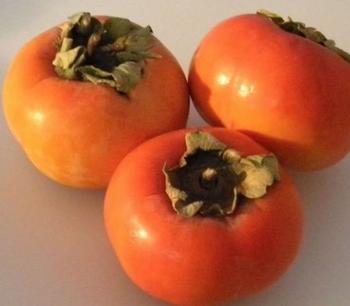Persimmon
-
Scientific NameDiospyros kaki
-
Special ConsiderationsPersimmon wood is brittle. Therefore, it is important to develop strong scaffold branches with wide angles (nearly horizontal) early in the life of the plant. Because persimmon bear fruit on both new wood and one year-old wood, opening the plant by removing some old branches and heading tall branches is preferable to uniformly heading back all branches.
 persimmon
persimmon -
Fruit grows on:
New wood and one year-old wood
-
What to Prune in Winter
Remove dead, diseased or damaged branches.
Remove crossing branches.
Remove branches that have bent low to the ground. They will be replaced by growth that originates from the trunk or scaffold branches.
Head back any branches that have grown too tall. Prune to an outward-facing bud. Otherwise, try to avoid heading cuts, because they can spawn a chaotic profusion of branches at the point of the cut.
Remove spindly branches that will break under the weight of the fruit.
Thin the entire plant to create an even spacing between the branches.
Prune the remaining branches lightly, because the buds at the branch tips are the most productive fruit producers.
-
What to Prune in Summer
Unless necessary to address excessive or dysfunctional growth, summer pruning generally is not performed, because much of the fruit forms at the tips of the branches.

